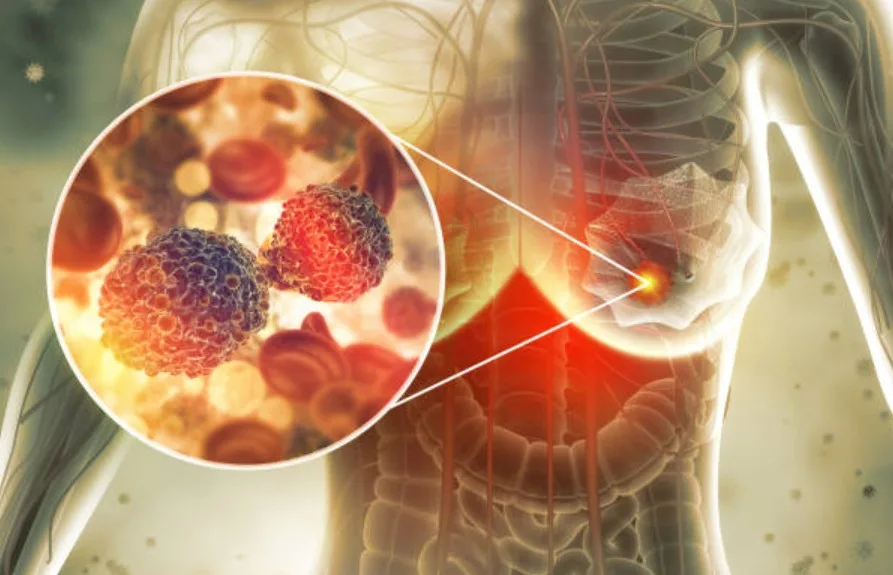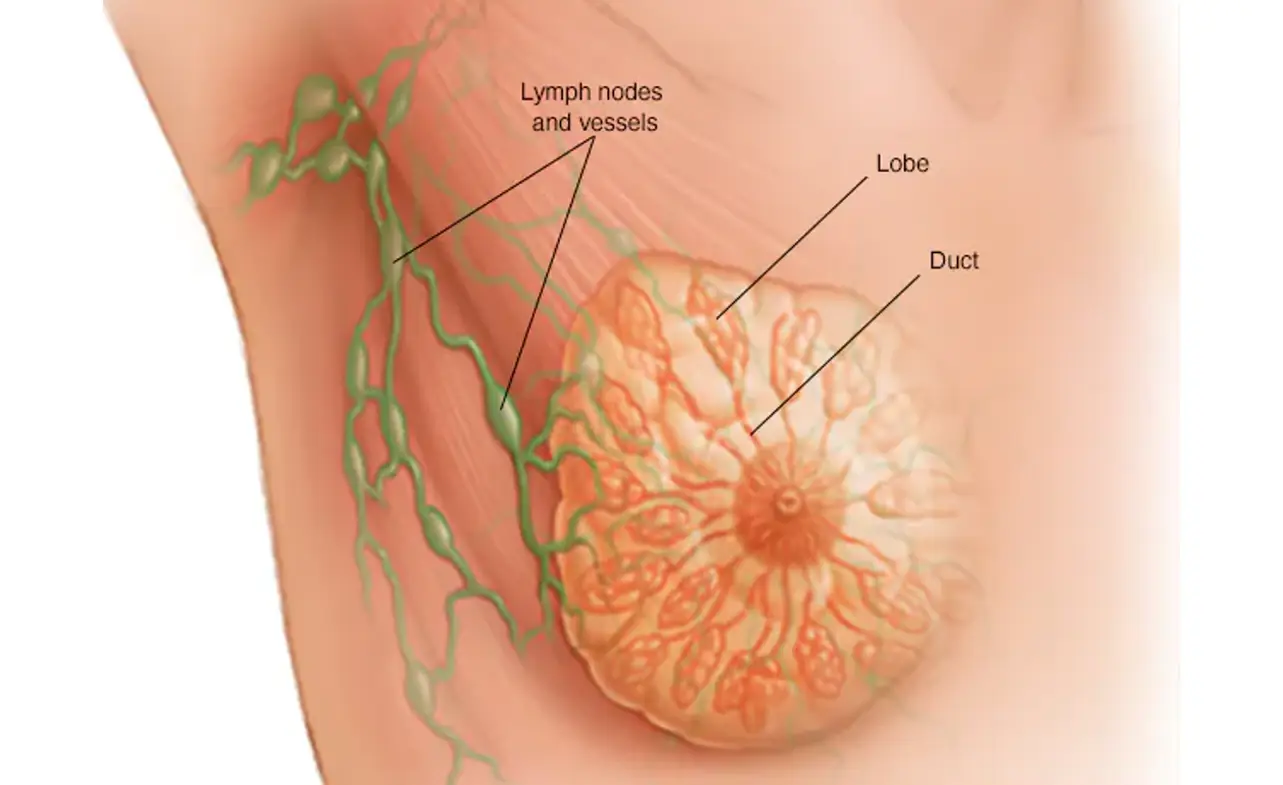Pertuzumab Breast Cancer: Causes and Risk Factors
Breast cancer remains one of the most common cancers affecting women worldwide, and advancements in targeted therapies have significantly improved outcomes. Among these treatments, pertuzumab has gained recognition as a powerful option for certain patients. Its role in treating HER2-positive breast cancer is particularly impactful, offering new hope and better survival rates.
This article explores everything you need to know about pertuzumab breast cancer, from its definition and applications to symptoms, diagnosis, treatment strategies, and recent innovations. By the end, you will have a clearer understanding of how this therapy works, who it benefits most, and what patients can expect throughout their treatment journey.
Definition and Overview
Pertuzumab is a monoclonal antibody designed to target the HER2 receptor, a protein found in some breast cancer cells that promotes tumor growth. When used in combination with other therapies such as trastuzumab and chemotherapy, pertuzumab breast cancer treatment has shown remarkable effectiveness in slowing disease progression.
Approved by the U.S. Food and Drug Administration (FDA), pertuzumab is often prescribed for patients with HER2-positive metastatic or early-stage breast cancer. Its mechanism blocks cell signaling pathways that drive tumor growth, giving patients a greater chance of remission and improved survival.
Types
Breast cancer is not a single disease but categorized into various types based on hormone receptor status and HER2 expression. Pertuzumab is specifically used for:
- HER2-positive breast cancer: The most relevant type where pertuzumab is effective.
- Early-stage HER2-positive breast cancer: Often treated with a combination of pertuzumab, trastuzumab, and chemotherapy before or after surgery.
- Metastatic HER2-positive breast cancer: Where cancer has spread beyond the breast, pertuzumab offers a vital treatment option.
Causes and Risk Factors
The exact cause of breast cancer is not fully understood, but several risk factors increase susceptibility:
- Genetic mutations such as BRCA1 and BRCA2
- Family history of breast cancer
- Hormonal imbalances and prolonged estrogen exposure
- Lifestyle factors such as obesity, smoking, and alcohol consumption
- Age and gender, with older women being at higher risk
For HER2-positive cases, overexpression of the HER2 protein is the main driver of tumor growth, making pertuzumab a targeted solution.
Symptoms and Early Warning Signs
Recognizing symptoms early is crucial for effective treatment. Common signs of breast cancer include:
- Lumps or thickened tissue in the breast or underarm
- Changes in breast shape or size
- Nipple discharge, sometimes containing blood
- Skin dimpling or redness on the breast
- Persistent breast pain
If these symptoms are present, prompt medical evaluation can lead to earlier detection and better treatment outcomes.
Diagnosis
Diagnosis of pertuzumab breast cancer involves several steps:
- Mammogram and ultrasound: Imaging to detect abnormalities.
- Biopsy: Tissue sampling to confirm cancer cells.
- Immunohistochemistry (IHC) and fluorescence in situ hybridization (FISH): Tests that determine HER2 status.
- MRI or CT scans: To check cancer spread in advanced cases.
HER2-positive confirmation is essential before considering pertuzumab as a treatment option.
Treatment Options
Pertuzumab breast cancer treatment is usually part of a combination therapy plan. Common strategies include:
- Neoadjuvant therapy: Pertuzumab with trastuzumab and chemotherapy before surgery.
- Adjuvant therapy: Pertuzumab after surgery to reduce recurrence risk.
- Metastatic treatment: Pertuzumab with trastuzumab and docetaxel chemotherapy for advanced cases.
Side effects may include diarrhea, fatigue, nausea, and infusion-related reactions, but many patients tolerate the treatment well under medical supervision.
Prevention and Lifestyle Recommendations
While no method can guarantee prevention, lifestyle changes can reduce risk:
- Maintaining a healthy weight
- Regular physical activity
- Limiting alcohol consumption
- Avoiding smoking
- Undergoing regular screenings and genetic testing if at risk
For patients already diagnosed, following a balanced diet and staying active can help manage side effects and improve quality of life during pertuzumab therapy.
Prognosis and Survival Rates
Pertuzumab has significantly improved survival rates in HER2-positive breast cancer patients. Studies show that the addition of pertuzumab to trastuzumab and chemotherapy increases overall survival by several months to years, depending on the stage of cancer.
Patients with early-stage HER2-positive breast cancer have particularly favorable outcomes when treated with pertuzumab, with reduced recurrence rates and longer disease-free intervals.
Latest Research and Innovations
Ongoing research continues to expand the potential of pertuzumab breast cancer therapy. Current studies are exploring:
- Combining pertuzumab with new targeted drugs
- Refining dosing schedules for improved safety
- Expanding treatment use in different breast cancer subtypes
- Personalized treatment approaches based on genetic profiling
These advancements hold promise for even more effective and less toxic therapies in the future.
Coping and Support for Patients
A breast cancer diagnosis can be overwhelming, but emotional and practical support makes a difference. Patients undergoing pertuzumab treatment can benefit from:
- Support groups for emotional well-being
- Counseling or therapy to manage stress and anxiety
- Patient education on treatment expectations and side effects
- Financial assistance programs for costly medications
Engaging with healthcare teams and support networks empowers patients to navigate treatment with resilience.
Conclusion
Pertuzumab breast cancer treatment has transformed the outlook for patients with HER2-positive disease. By targeting the HER2 protein directly, it offers more effective results than traditional chemotherapy alone. When combined with trastuzumab and other therapies, pertuzumab significantly improves survival and reduces recurrence rates.
As research advances, patients can look forward to even better outcomes and more personalized treatment options. Early detection, informed decisions, and comprehensive care remain the pillars of successful breast cancer management.
FAQ
1. What is pertuzumab used for in breast cancer?
Pertuzumab is used to treat HER2-positive breast cancer, both in early and metastatic stages, often in combination with trastuzumab and chemotherapy.
2. How is pertuzumab administered?
It is given intravenously in cycles, usually every three weeks, under medical supervision.
3. Can pertuzumab cure breast cancer?
While not considered a cure, pertuzumab significantly improves survival rates and reduces the risk of recurrence in HER2-positive patients.
4. What are the common side effects of pertuzumab?
Side effects may include diarrhea, nausea, fatigue, and infusion-related reactions, but most are manageable with medical support.
5. Who qualifies for pertuzumab treatment?
Patients diagnosed with HER2-positive breast cancer, confirmed through biopsy and lab testing, are candidates for pertuzumab therapy.







